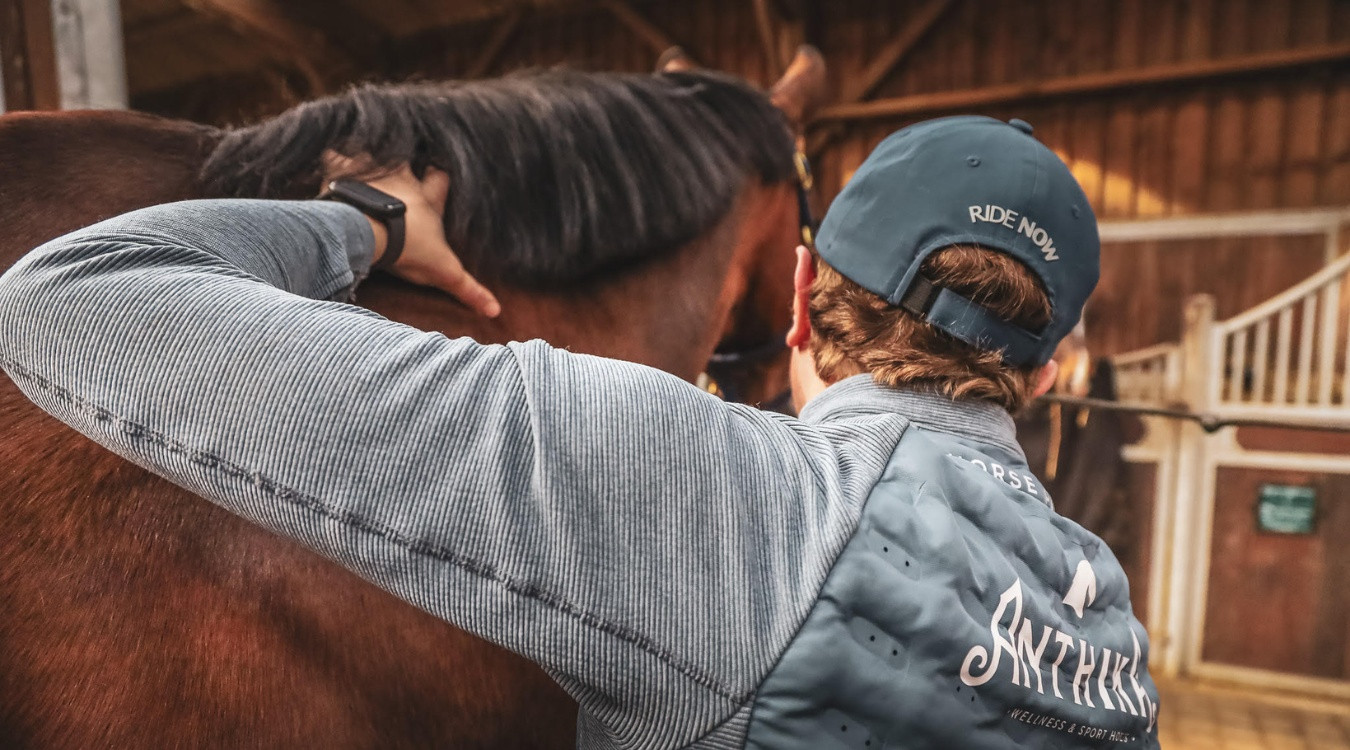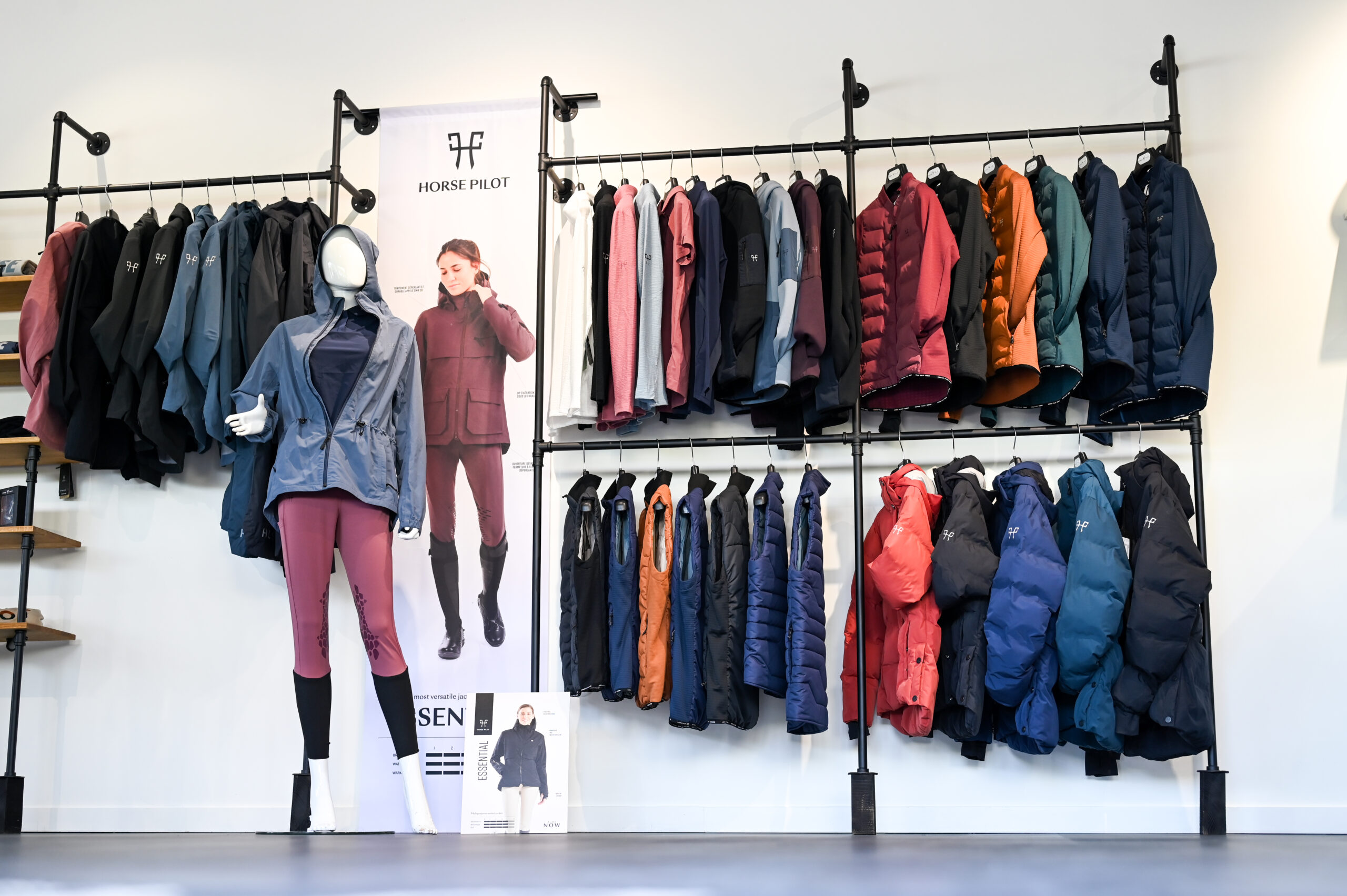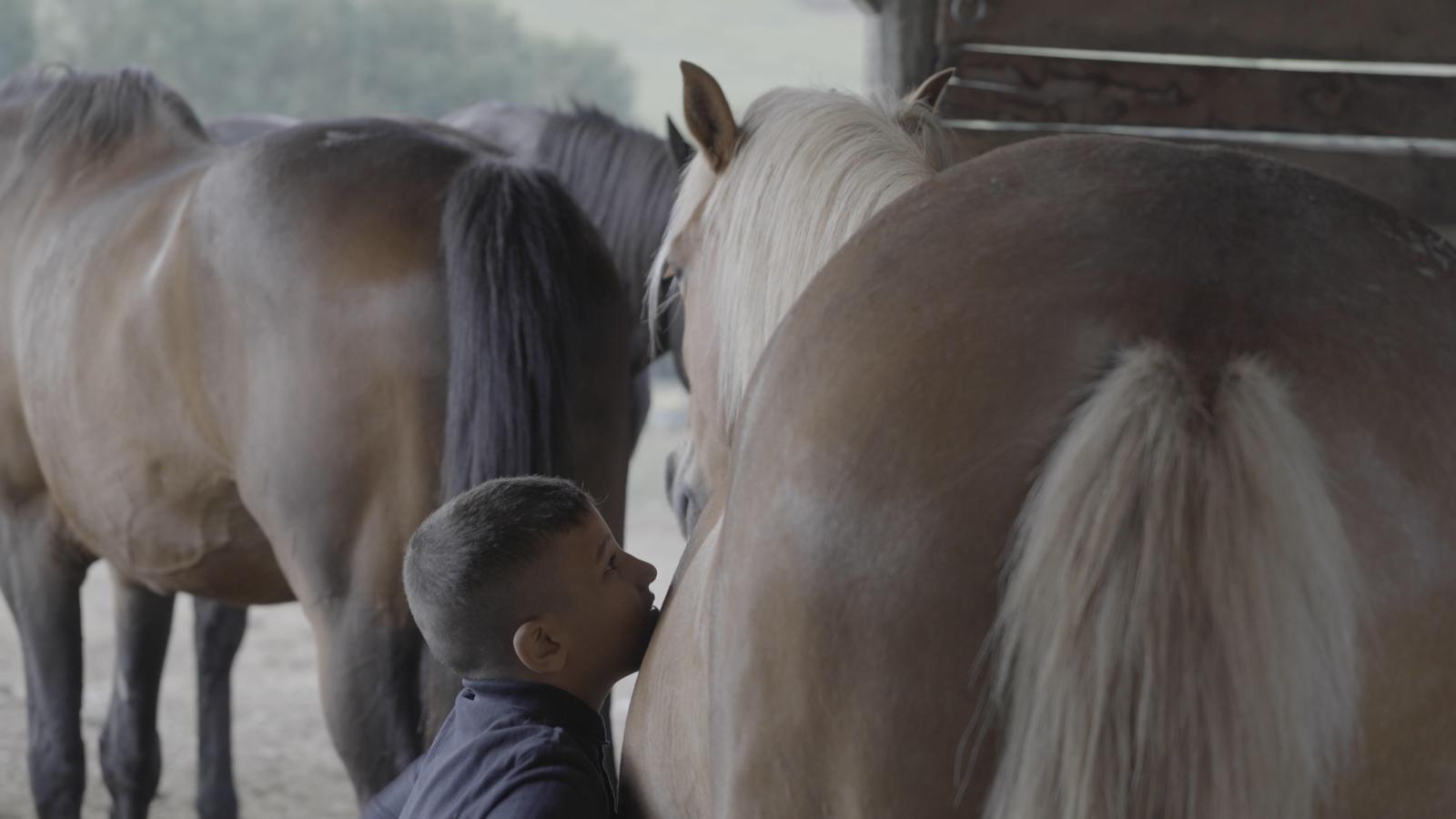Horse recovery through massage

Meet a specialist in equine well-being
Anthony Boughaba Duplaix is an equine masseur and founder of Anthika, a company offering a range of products for the well-being of horses.
A rider for many years in the Fontainebleau region, Anthony offers massage services to help horses recover after a competition, but also to prepare them for the effort and optimize their performance. Here, Anthony explains how horse recovery by massage is emerging not only as a source of physical relief, but also as a means of strengthening the unique bond between riders and their horses.
The origin of muscular tension in horses
The rider’s influence on muscular tension
Horse Pilot : How do the rider’s weight and position influence muscular tension in the horse?
Anthony Boughaba Duplaix : By nature, horses are not designed to carry a rider. Every horse is capable of walking, trotting, cantering, backing up and jumping on its own. The horse even has the ability to evolve naturally in collected gaits. This is the case with anxious horses, for example. We’re talking about the innate-locomotor.
When ridden, the horse must relearn to function with the rider’s weight and demands. It is precisely these rider-induced imbalances that will have repercussions on the horse’s muscular, articular, ligamentary and tendinous systems. In working with the horse, we therefore seek what La Guérinière defines as “the restoration of natural gaits“.
Fair horsemanship will limit the impact on the horse, whereas overly restrictive and disrespectful horsemanship will have a disastrous impact and encourage pathologies of the locomotor system.
But the rider is not the only constraint on the horse. The equipment, by pressing on certain parts of the body, must also be taken into account. The challenge is to distribute the pressure as evenly as possible, so that the mounted horse can function as freely as possible.
Last but not least, foot management has an impact on the horse’s entire body. Many foot imbalances have an impact on the horse’s posture, and can lead to muscular tension due to compensation.
The impact of effort on the horse’s muscles
HP : How do different types of effort affect a horse’s muscles?
A.B.D. : Above all, it’s the repetition of movements that stresses the muscles in the same way and creates trauma. In fact, horse injuries vary from discipline to discipline. Show jumping horses are particularly prone to tendon injuries of the forelimbs, while dressage horses, especially at high level, are more prone to trauma of the hind limbs, particularly the tarsal joint and fetlock suspensory ligament. It is therefore essential to vary the exercises in order to stimulate the horse’s whole body.
HP : How can you detect the first signs of muscular tension in a horse?
A.B.D. : The first thing to do is to observe your horse: the way he stands in his stall, how he walks in freedom (cold or hot), how he reacts to grooming or how he gives his feet when being groomed. Riders spend a lot of time on horseback and much less on foot, yet there are many easily observable signs of tension.
Let’s not forget that, before being a riding (sport) horse, he’s first and foremost a living being. This implies emotions, sensitivity and a way of communicating all his own. We must take this into account and listen to him.
To sum up, it is essential :
- Observe your horse.
- Offer him regular walking work sessions.
- Palpate his body to see if there are areas of heat, sensitivity and flexibility in the muscle.
Although tension does not necessarily mean pain, it is advisable to relieve it quickly.

Optimizing your horse’s recovery
HP : Are there effective active recovery methods for horses?
A.B.D. : Active horse recovery means aerobic effort, i.e. prolonged but not very intense effort. To give your horse a good chance to recover, we recommend trotting him on long reins for a maximum of 5 to 15 minutes, letting him choose his own speed. Walking at walking pace is not active recovery, but passive recovery, which can follow active recovery.
For horse recovery to be effective, it must take place directly after exercise. If you wait 10 minutes, it will be less effective.
What we are looking for during this recovery is :
- Reduce heart rate towards resting rate.
- Reduce respiratory rate.
- Reduce temperature and eliminate lactic acid stored during exercise.
Active recovery is particularly recommended after intense effort.
Optimizing the horse’s recovery through massage
The benefits of horse recovery by massage
HP : What are the main benefits of massage for horse recovery?
A.B.D. : Massage helps to improve blood circulation, the lymphatic system, toxin elimination, muscle suppleness and joint mobility.
The positive effects on horse recovery are numerous :
- Less aches and pains
- Flexibility and mobility
- Amplitude preservation
- Reduces pain associated with exertion and pathologies
In addition to the direct physical benefits, massage also plays an important role in the horse’s psyche. Physical and mental well-being reduces the risk of injury and enhances performance. As a rider myself, I was able to see the positive effects of the preparation/recovery protocol implemented for my horse: he was able to continue his efforts with the freshness of the first few days.
In fact, rider opinion is fairly unanimous on the positive signs following a massage. Horses are calmer, more supple and more readily available for work.
How often should you massage your horse?
HP : How often do you recommend massaging a horse in regular training to optimize recovery?
A.B.D. : It all depends on the starting situation. My policy is always the same: adaptation. As a general rule, we set up monthly follow-ups. To optimize progress, it’s important for the rider/groom to take part in the treatment between sessions. In this way, we can see great progress.
However, you should be aware that a single session will not provide 100% relief for the horse as a whole. Easing certain tensions can, in fact, upset the horse’s body schema and induce changes in the way it uses its body, which can then lead to further tensions.

The importance of preparation to help recovery
HP : How can good physical preparation influence a horse’s recovery?
A.B.D. : The first step in helping your horse recover is to prepare him properly. The more muscularly available the horse is to work, the less the effort will affect his body, and the better he will recover.
HP : How can I adapt my training program to optimize recovery?
A.B.D. : The training program must be drawn up on a case-by-case basis and adapted to the horse’s profile, age, liabilities and discipline. As we saw above, it is the repetition of the same actions that is largely responsible for injuries. It is therefore important to vary activities and their intensity.
For example, if a show jumping horse has to work on his discipline to accustom his body to the effort required, it’s obvious that he’s not going to jump 160cm every day in training. In fact, top-level horses hardly ever jump these heights in training. Just as a marathon runner doesn’t run 42km every day. So it’s essential to also work on the bottom, flexibility and mental strength.
Rest phases are also essential. Training is important, but you mustn’t overtrain either.
Finally, the age of the horse is another factor to be taken into account. A young, growing horse needs to be preserved, as does an experienced horse that has already suffered injuries. In addition, some horses need more frequent rehearsals, while others evolve better if their mental state is preserved through in-depth outdoor work.
HP : How can we adjust a horse’s preparation according to its response to effort?
A.B.D. : To develop and optimize its performance, a horse first needs a suitable living environment. Horses are not made to live in a stable 23H24. A sedentary lifestyle is the number one enemy of well-being.
Feed also plays a vital role. First and foremost, the horse must be given unlimited hay.
Last but not least, social ties are crucial to good mental health. Horses are not made to live alone. They need regular contact with other horses. This is not easy in today’s facilities, but we must strive to achieve these conditions as far as possible.
At the same time, it’s essential to observe and listen to your horse. He’s entitled to have a few bad days, and that’s no cause for concern. On the other hand, if it continues, you should consult a professional.
Tips for massaging your horse
HP : Are there any areas to focus on or avoid when massaging a horse?
A.B.D. : The entire body can be massaged, from the head to the tail and limbs. The areas to be massaged depend not only on the effort involved, but also on the horse. Some need to be toned, others relaxed, whatever the discipline.
During the massage, the contracture zones will react abnormally when you pass your hands over them (vibrations, movements, pain…). If tension persists, don’t insist and call in a professional. He or she can give you advice on how to massage your horse yourself.
On a daily basis, focus on areas that make the horse react positively, so that you can spend quality time with him and strengthen the bond.

The importance of calling in a professional
HP : When is it advisable to call in a professional to massage your horse?
A.B.D. : There’s no age limit for having your horse massaged. Nor do you have to be a competitor. Massage should have a preventive role first and foremost. It is therefore advisable to have your horse massaged before tension appears. As for timing, this can be before or after a deadline, or even during one.
Regular care will have a significant impact on the horse’s development.
HP : How can the professional identify and relieve specific muscular problems?
A.B.D. : The professional’s first step is to listen to the horse’s history. The rider/groom is best placed to provide the necessary information.
Next, a phase of observation in movement and palpation of the body as a whole are essential to get an idea of the problems present.
The professional will have a particularly keen eye for anatomy, as well as for the links that may exist between asymmetry at work and muscular tension. This information will enable him to target the parts of the body on which to work and help, for example, the horse to improve its engagement.
It’s important to point out that massage is part of a wellness approach, and that the masseur never replaces the advice of a veterinarian.
Care products
HP : What types of skincare products do you recommend for muscle recovery in horses?
A.B.D. : Before considering the use of a product, my first advice is to use cold to help the body come down in temperature. A good shower when temperatures are high, and ice gaiters for the limbs, are very helpful for horses. Cold should therefore be considered as the first line of treatment.
Secondly, there is a wide range of care products for muscle recovery. It is advisable to have a routine for each horse according to its needs, and not to underestimate the importance of nutritional supplements.
After exercise, for example, the first thing to think about is hydration (electrolytes). In hot or cold weather, when the horse is sweating, hydration is the first ally for good recovery. For added comfort, this can be accompanied by muscle relaxants and natural herbal supplements with anti-inflammatory properties.
Today, there’s an abundance of massage oils, cooling gels and clays. As far as I’m concerned, my policy is clear: who can do more, can do less. So I’m in favor of a protocol that evolves with your efforts. There’s no need to bring out the heavy artillery after every session.
Here is an example of a competition care protocol:
- Day 1: Locate areas of tension and massage them with massage oil or simply by hand. Use a gel to relieve tendons.
- Second day: repeat the actions of the first day and add clay to relieve areas of tension. Linseed dressings can be used for horses with sensitive feet.
- Day three: repeat the actions of day two, possibly varying the clay used. For horses with tendon problems, and in agreement with the vet, apply zinc strips.
To ensure that the protocol is perfectly adapted to your horse, I offer a follow-up service at competitions, whatever the level of competition. In addition, all recommended products are available on the Anthika website.

To remember for horse recovery through massage
Massage has many virtues for horses, and these go far beyond recovery. It’s also an excellent way of preparing horses for exertion and strengthening the deep bond between rider and mount. By integrating massage into your wellness routine and enlisting the help of a professional, you can help your horse to perform in the long term.
—–
Discover the instagram account of Anthika and its website anthika.fr.
Photo credits: Benjamin Givoz / Instagram Account: le_manege_noir.


